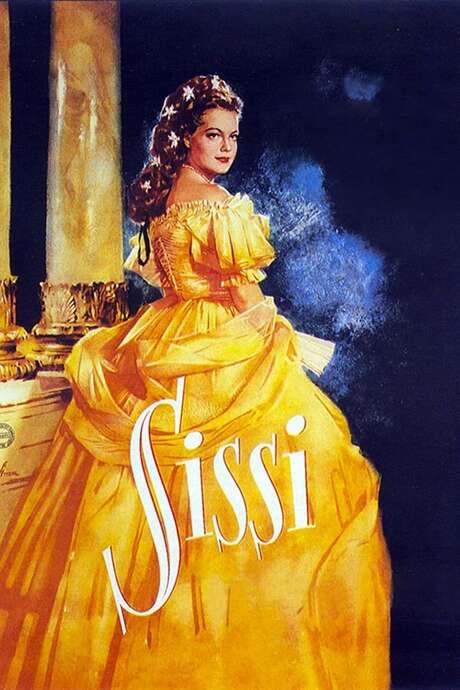
Sissi: The Fateful Years of an Empress
Year: 1957
Runtime: 109 mins
Language: German
Director: Ernst Marischka
After a joyful visit to Hungary, Sissi becomes seriously ill and is forced to seek a milder climate. Her mother arranges for her to leave Austria and convalesce on Madeira, where the young Empress hopes to regain health in the Mediterranean environment. She stays in a villa, receiving attentive care and soothing sea breezes that aid her recovery.
Warning: spoilers below!
Haven’t seen Sissi: The Fateful Years of an Empress yet? This summary contains major spoilers. Bookmark the page, watch the movie, and come back for the full breakdown. If you're ready, scroll on and relive the story!
Sissi: The Fateful Years of an Empress (1957) – Full Plot Summary & Ending Explained
Read the complete plot breakdown of Sissi: The Fateful Years of an Empress (1957), including all key story events, major twists, and the ending explained in detail. Discover what really happened—and what it all means.
Empress Elisabeth, Romy Schneider nicknamed Sissi, enjoys traveling in Hungary. She welcomes the politically valuable friendship of Count Andrassy, Walther Reyer, but when he confesses he is in love with her, she returns to Vienna to avoid letting the relationship grow too intimate. Her time in Hungary offers only a temporary relief from court life in Vienna, where dutiful Franz Josef remains at his desk and his strict, domineering mother Sophie interferes in the raising of his daughter with Sissi, Archduchess Sophie, Vilma Degischer. Sissi decides to return and meets Franz underway, who was coming to Hungary to bring her back to Vienna. They decide to take a vacation in Bad Ischl, but Sissi falls ill and is diagnosed with tuberculosis possibly fatal. On doctors’ orders Franz Josef must allow his mother to remove his daughter from Sissi’s keeping.
In poor health, deprived of the company of husband and child, Sissi is in danger of losing the will to live as she travels to healthier climates on Madeira and Corfu. Desperately needed psychosomatic therapy appears in the form of her indestructibly positive mother Ludovika, who lovingly nurses Sissi’s illness and restores her zest for life by taking her on idyllic walks. Major Böckl, Josef Meinrad, the clumsy body-guard whose doting admiration for the empress borders on the improper, provides a comical note, as he does in each part of the trilogy.
Finally, Sissi recovers and rejoins her husband on an official visit to Milan and Venice, Austria’s remaining possessions in northern Italy. Italian nationalists have prepared a hostile welcome for the Habsburg sovereigns; the Milanese nobility send their servants, dressed in noble clothing, to a royal command performance at La Scala, at which the orchestra begins with the melody of Joseph Haydn’s Gott erhalte Franz den Kaiser but smoothly transitions to Verdi’s chorus Va, pensiero from Nabucco and the disguised servants in the audience sing it in protest against Austrian rule. There is a moment of comic relief when, after the opera, Franz Josef and Sissi receive the disguised servants at a formal reception, where the servants are presented to the imperial couple under the names of their aristocratic masters and mistresses. Sissi is aware that she is not meeting the true nobility, but when the real nobles realize their servants were introduced to the emperor and empress, they shriek in despair and panic at the idea that the imperial couple believe the awkward, common servants were really the aristocrats. In Venice, crowds stand in hostile silence at the couple’s procession by royal barge on the Grand Canal and as they pass, Italian nationalist flags are defiantly unfurled from behind shuttered windows. But the emotional Italians melt when they witness the openly loving reunion between Sissi and her little daughter on St Mark’s Square.
Last Updated: October 07, 2025 at 08:50
Unlock the Full Story of Sissi: The Fateful Years of an Empress
Don't stop at just watching — explore Sissi: The Fateful Years of an Empress in full detail. From the complete plot summary and scene-by-scene timeline to character breakdowns, thematic analysis, and a deep dive into the ending — every page helps you truly understand what Sissi: The Fateful Years of an Empress is all about. Plus, discover what's next after the movie.
Sissi: The Fateful Years of an Empress Timeline
Track the full timeline of Sissi: The Fateful Years of an Empress with every major event arranged chronologically. Perfect for decoding non-linear storytelling, flashbacks, or parallel narratives with a clear scene-by-scene breakdown.

Characters, Settings & Themes in Sissi: The Fateful Years of an Empress
Discover the characters, locations, and core themes that shape Sissi: The Fateful Years of an Empress. Get insights into symbolic elements, setting significance, and deeper narrative meaning — ideal for thematic analysis and movie breakdowns.

Similar Movies to Sissi: The Fateful Years of an Empress
Discover movies like Sissi: The Fateful Years of an Empress that share similar genres, themes, and storytelling elements. Whether you’re drawn to the atmosphere, character arcs, or plot structure, these curated recommendations will help you explore more films you’ll love.
Explore More About Movie Sissi: The Fateful Years of an Empress
Sissi: The Fateful Years of an Empress (1957) Scene-by-Scene Movie Timeline
Sissi: The Fateful Years of an Empress (1957) Movie Characters, Themes & Settings
Sissi: The Fateful Years of an Empress (1957) Spoiler-Free Summary & Key Flow
Movies Like Sissi: The Fateful Years of an Empress – Similar Titles You’ll Enjoy
Corsage (2022) Complete Plot Breakdown
Sisi & I (2024) Ending Explained & Film Insights
Hotel Sacher (1000) Film Overview & Timeline
Sibyl (2019) Complete Plot Breakdown
Kronprinz Rudolf (1000) Detailed Story Recap
Lissi and the Wild Emperor (2007) Complete Plot Breakdown
Elisabeth (2005) Spoiler-Packed Plot Recap
Sissi: The Young Empress (1956) Spoiler-Packed Plot Recap
Mayerling (1968) Film Overview & Timeline
Sissi (1955) Spoiler-Packed Plot Recap
Hotel Sacher (1939) Film Overview & Timeline
Mayerling (1936) Full Summary & Key Details
Sissi - Forever My Love (1962) Complete Plot Breakdown
Sisi (1000) Detailed Story Recap
Senso (1954) Complete Plot Breakdown
















